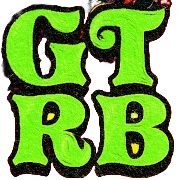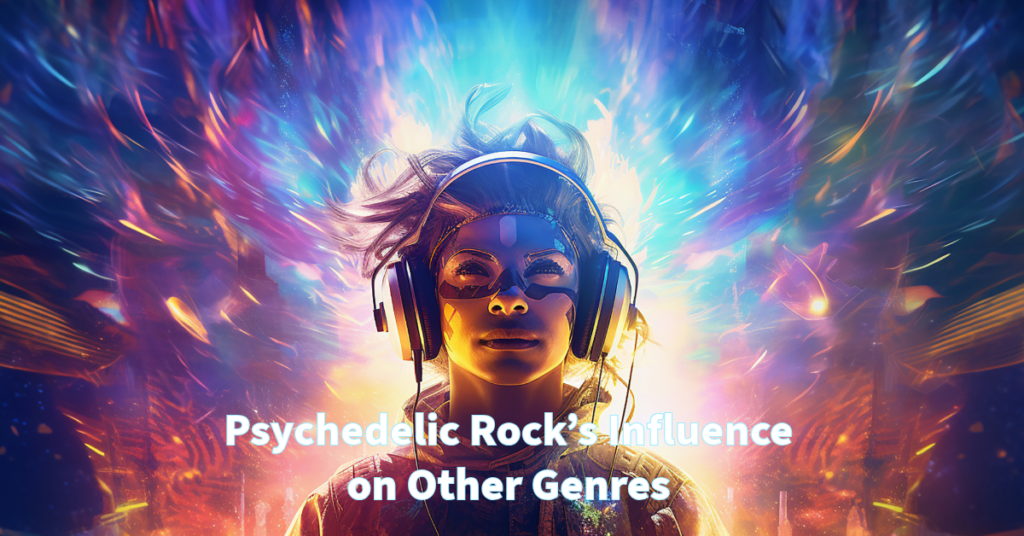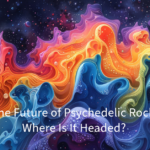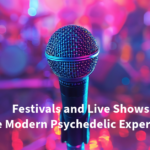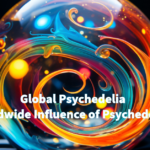Psychedelic rock was never supposed to stay in one lane, man. The whole point of the genre is that it’s all about breaking the mold, stretching what’s possible, and pushing music into places it hasn’t been before. That’s why it didn’t just stay locked in the trippy world of ‘60s rock. Instead, it’s seeped into other genres like a vivid dream you can’t shake off. From indie rock to electronic music, and even hip-hop, you can find psychedelic influences creeping into all kinds of sounds. It’s kind of beautiful to watch it evolve, like watching smoke change shape as it drifts in the air.
Let’s break down how psychedelia has woven its way into other genres, turning everything it touches into something a little weirder and a little more magical.
Indie Rock’s Psychedelic Roots
You can’t talk about modern indie rock without mentioning how deep the psychedelic influences run. Think about bands like Tame Impala—they’re not just a psych band anymore, they’re practically synonymous with indie rock now. But what makes them so iconic is the way they brought that swirling, dreamy psych sound into a genre that’s traditionally more straightforward. Lonerism wasn’t just a revival—it was a reimagining. That reverb-soaked guitar, the hazy vocals, the sprawling soundscapes—it’s all rooted in psychedelic rock, but wrapped in this indie sensibility that makes it accessible to people who wouldn’t normally vibe with “psychedelic” music.
Then you’ve got bands like MGMT, who dropped Oracular Spectacular in 2007 and turned the indie world upside down. “Time to Pretend” and “Electric Feel” sound like someone threw a synth-heavy indie track into a blender with Jefferson Airplane and a fistful of acid. And that’s the magic—they weren’t just reviving the old sounds; they were flipping them on their head and making them fresh again. They built a bridge between indie kids and the psych-rock heads, and now that crossover is everywhere.
Electronic and Psychedelic Fusion
Now, when you think about psychedelic music, it’s hard not to mention the electronic scene. Psychedelia isn’t just about guitars and flower power anymore. It’s found a new home in electronic music, where producers are pushing boundaries in ways that feel as revolutionary as the psychedelic rock pioneers of the ‘60s.
Look at guys like Flying Lotus. His music doesn’t sit still for a second. It’s constantly morphing, filled with mind-bending beats, layers of experimental sounds, and a kind of trippiness that isn’t just in your head—it’s in your body. Tracks like “Do the Astral Plane” feel like a journey through space and time, complete with alien synths and warped rhythms that turn your brain inside out. This isn’t just electronic music for the dance floor—it’s a head trip for your soul.
You can’t talk about electronic psych fusion without mentioning Shpongle either. These guys have basically invented a genre that’s like taking a classic psych rock album and reimagining it with layers of trippy electronic production. Their music has that same immersive quality that psychedelic rock does—you don’t just listen to it, you get lost in it. Tracks like “Divine Moments of Truth” are the kind of thing that pulls you into another dimension with swirling sounds, exotic instruments, and beats that feel like they’re expanding and contracting in your mind.
Hip-Hop’s Psychedelic Influences
Surprised to hear that psychedelia has wormed its way into hip-hop? You shouldn’t be. Hip-hop is a genre that thrives on creativity, experimentation, and breaking boundaries, which makes it a natural home for psychedelic influences. Some of the trippiest music in the last decade has come from hip-hop artists who’ve fully embraced the mind-expanding vibes of psychedelia.
Take A$AP Rocky, for example. His 2018 album Testing is a kaleidoscope of sounds that pull from all kinds of influences, including psych rock. Tracks like “L$D” don’t just nod to psychedelic culture—they dive headfirst into it. The music video for “L$D” looks like something straight out of a late-‘60s acid trip, full of vivid colors, dream-like visuals, and trippy camera effects. But it’s not just the visuals—it’s the music itself that takes you on a journey. The dreamy, synth-heavy production, the echoey vocals—it’s all got that hazy, surreal feeling that’s classic psychedelia, but filtered through a modern hip-hop lens.
Then there’s Kid Cudi, whose entire aesthetic feels like it was born from the same creative impulses that drove the psych rock pioneers. His Man on the Moon albums are filled with introspective lyrics and atmospheric production that pulls listeners into a world where reality and fantasy blend together. Songs like “Pursuit of Happiness” (especially the Steve Aoki remix) take on a whole new vibe, with pulsating beats and ethereal synths that feel like they’re stretching the fabric of space and time.
Even someone like Tyler, The Creator has dipped his toes into psychedelic sounds. His album Flower Boy blends soulful melodies with dream-like beats, creating a vibe that feels like you’re floating through an alternate universe. Tracks like “See You Again” have this lush, layered production that echoes the best of psychedelic rock, but with a fresh twist that only Tyler could pull off.
Modern Pop’s Love for Psychedelia
It might sound wild, but even mainstream pop has caught the psychedelic bug. Think about Lady Gaga’s Chromatica, with its futuristic, otherworldly production, or Harry Styles with Fine Line, which is filled with that laid-back, dreamy psych energy. “Watermelon Sugar” could easily fit into a modern-day psychedelic playlist with its warm, nostalgic feel and sun-soaked vibes.
And let’s not forget Lana Del Rey, whose music oozes with retro influences, blending old-school psych aesthetics with modern production. Her albums have this cinematic, dream-like quality that pulls from the same deep well of surreal, introspective vibes that psychedelic rock first tapped into decades ago. Tracks like “Venice Bitch” and “Norman F***ing Rockwell” are sprawling, sun-drenched epics that wouldn’t feel out of place on a playlist alongside Pink Floyd’s Wish You Were Here.
Conclusion: Psychedelia is Everywhere
Psychedelic rock isn’t just a relic of the past—it’s alive and well, and it’s weaving its way into every genre you can imagine. From indie and electronic to hip-hop and pop, artists are taking that same exploratory spirit and pushing music into new dimensions. The beauty of psychedelic music is that it never sits still. It’s constantly evolving, reinventing itself, and showing up where you least expect it.
So, if you think you’ve outgrown psychedelia, or that it’s all about tie-dye shirts and lava lamps, think again. The psychedelic influence is everywhere, shaping the sounds of today and tomorrow. Whether you’re zoning out to a trippy beat in your favorite hip-hop track or getting lost in a dreamy indie anthem, chances are, psychedelia’s got its fingerprints all over it. And we’re here for every second of it.
